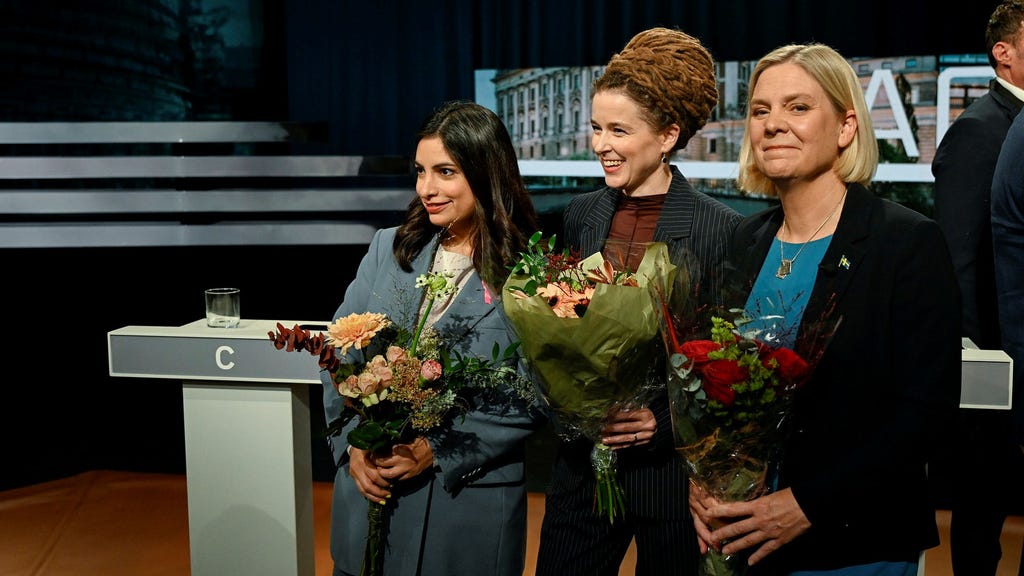The midpoint of the current parliamentary term reveals a discernible advantage for the opposition parties over the governing coalition, according to a recent DN/Ipsos poll. While this lead remains, it has notably diminished over the past year, indicating a potential shift in public sentiment. This dynamic political landscape is further characterized by significant gender disparities in voting preferences, a persistent trend that continues to shape the electoral outlook. Understanding these evolving trends requires a deeper examination of the individual party performances, the underlying factors contributing to these shifts, and the broader implications for the future political trajectory.
The DN/Ipsos poll provides a snapshot of the current political climate, highlighting the opposition’s, albeit shrinking, lead. This suggests a gradual erosion of public confidence in the government’s performance, potentially fueled by factors such as economic conditions, policy decisions, or perceived leadership effectiveness. Conversely, the opposition’s gains, while present, are not substantial enough to suggest a decisive swing in public opinion. This creates a fluid political landscape where both the government and the opposition have opportunities to either consolidate or lose ground depending on their strategic maneuvering in the remaining half of the term. The narrowing gap also adds an element of uncertainty to predicting the outcome of the next election, making it a closely watched contest.
The persistent gender gap in voting patterns adds another layer of complexity to the political analysis. This divide often reflects differing priorities and concerns between male and female voters. Issues such as healthcare, education, social welfare, and gender equality often resonate differently with these demographics. Understanding these distinct perspectives is crucial for political parties aiming to broaden their appeal and secure a wider base of support. The parties’ ability to effectively address these specific concerns will likely play a significant role in shaping their electoral fortunes. Further research into the specific policy areas driving this gender gap is essential for a comprehensive understanding of the evolving political landscape.
The poll results underscore the dynamic nature of public opinion and the importance of continuous engagement with the electorate. For the governing parties, the shrinking lead serves as a call to action, demanding a reassessment of their strategies and a renewed focus on addressing the concerns of the public. This might involve refining policy approaches, strengthening communication efforts, or emphasizing their accomplishments to regain public trust. Conversely, the opposition parties, while enjoying a relative advantage, cannot afford to become complacent. They must capitalize on their momentum by articulating a clear and compelling vision for the future and demonstrating their ability to offer viable alternatives to the current government.
Beyond the immediate political implications, the poll findings also offer insights into the broader societal trends shaping the political discourse. Factors such as economic inequality, social polarization, and the rise of new political ideologies all contribute to the complex interplay of forces influencing public opinion. Understanding these underlying dynamics is essential for interpreting the poll results and anticipating future political developments. Furthermore, the role of media and social media in shaping public perception cannot be overlooked. The way information is disseminated and consumed significantly impacts the formation of political opinions and can influence voting behavior.
In conclusion, the DN/Ipsos poll provides a valuable glimpse into the current political landscape in the country. The opposition’s shrinking lead, coupled with the persistent gender gap in voting patterns, creates a dynamic and unpredictable political environment. Both the government and opposition parties face unique challenges and opportunities in the remaining half of the term. Their ability to effectively address public concerns, articulate a compelling vision for the future, and adapt to the evolving political dynamics will ultimately determine the outcome of the next election. Further analysis of the underlying societal trends shaping public opinion is essential for a comprehensive understanding of this complex political landscape and its future trajectory.














